There were some pretty interesting creatures living in North America before they went extinct. In fact, North America was once home to camels, enormous armadillo creatures, and giant sloths. Researchers have previously attributed their demise to the influx of Paleoindians, the first Americans. According to a new study, however, climate change and environmental changes are to blame instead.
Either way, let’s take a look at 10 extinct North American mammals and what made them such fascinating creatures.
1. Woolly Mammoths

Woolly mammoths had shorter ears than modern elephants.
©iStock.com/Aunt_Spray
Mammoths existed for millions of years before woolly mammals emerged. As a result, they lived during the Pleistocene and Holocene eras, when humans first appeared on the planet. Mammoths (Mammuthus) came to North America between 1.7 million and 1.2 million years ago. During icy seasons, mammals had fatty humps on their backs which likely provided them with nutrients and warmth. It is interesting to note that mammoths share more in common with elephants today, especially the Asian elephant, than mastodons.
2. North American Mastodons
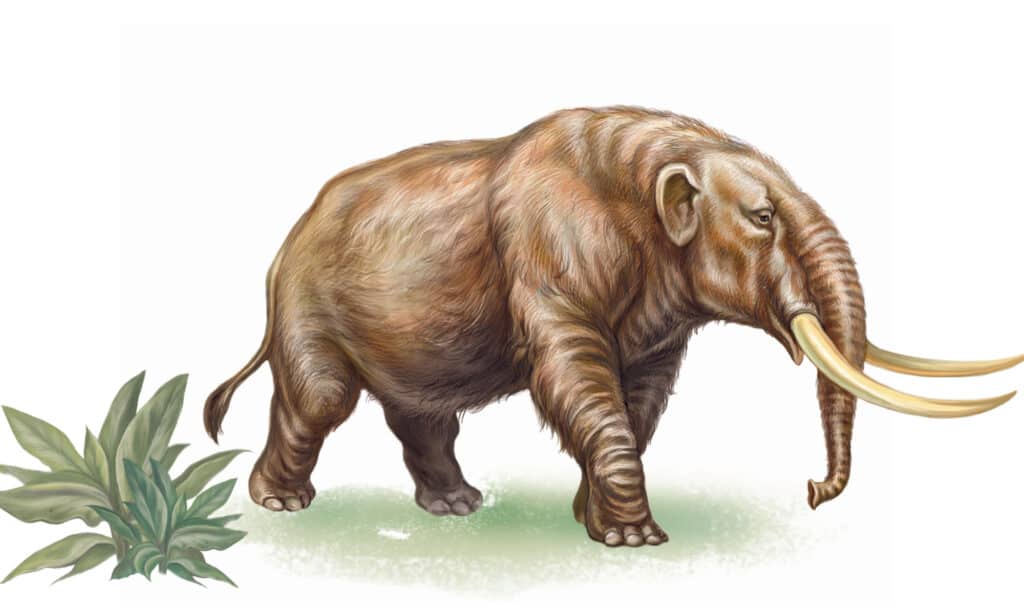
Mastodons were covered with fur, just like mammoths.
©Liliya Butenko/Shutterstock.com
A lot of times, mastodons and mammoths are confused with each other. This is pretty understandable since they are both large, shaggy elephants living on the prehistoric plains of North America. Like woolly mammoths, mastodons also had thick coats of shaggy hair that kept them warm in Pleistocene North America. Moreover, they were less sophisticated than their mammoth cousins. Mastodons, for example, had molars with cone-shaped cusps that helped them crunch leaves, twigs, and branches from deciduous and coniferous trees. They’re also a bit shorter than mammoths, but both species grew to heights of 7 to 14 feet (2 to 4 meters).
3. Camelops
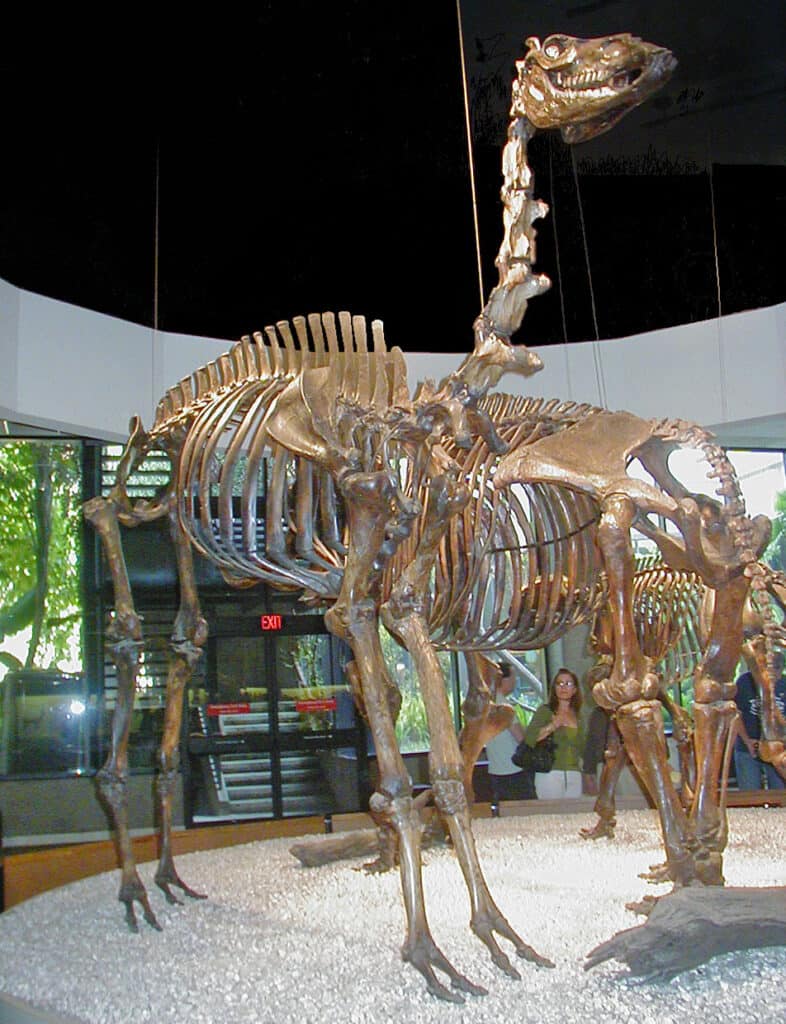
Approximately three to four million years ago, camelops covered most of western North America.
©WolfmanSF / CC BY-SA 3.0 – License
Camelops are extinct large camels from western North America, which existed between 3.6 million years ago and 11,700 years ago. However, beyond the Mississippi River, there is no record of Camelops. About 45 million years ago, the camelid family evolved in North America during the Eocene period. An adult Camelops stood about 7 feet tall (2.2 meters) and weighed 1,764 pounds (800 kilograms).
4. North American Horses
It is believed that European settlers introduced horses to the Americas for the first time. The truth is, however, quite the opposite of what you might think. Ancient horses once roamed North America approximately 50 million years ago until they went extinct at the end of the last ice age about 11,000 years ago. In spite of the fact that horses and donkeys died out in North America, they managed to survive in Eurasia and Africa, which explains why horses are still here today.
5. Dire Wolf
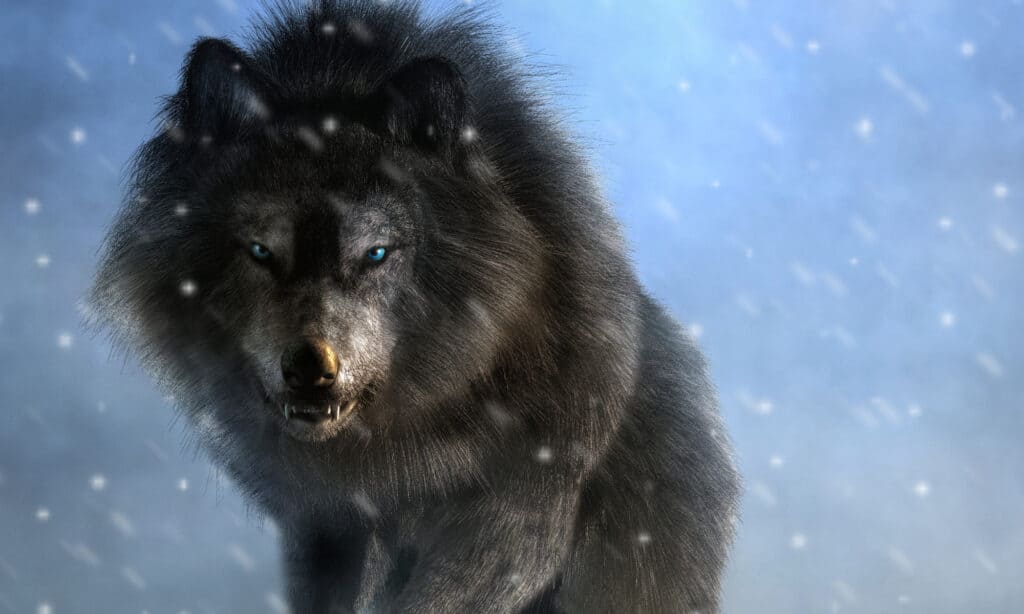
Dire wolves are the largest of the Genus Canis group, which includes wolves, coyotes, jackals, and domestic dogs.
©Daniel Eskridge/Shutterstock.com
Game of Thrones didn’t invent the dire wolf breed. In North America, they actually existed. Although dire wolves went extinct about 13,000 years ago, their bones are abundant in California’s La Brea Tar Pits and Wyoming’s Natural Trap Cave. About 5.7 million years ago, dire wolves split from wolves, making them distant relatives of today’s wolves on the canid family tree.
Our next extinct North American mammal is a bear that was once the most commonly found one throughout the land.
6. Short-faced Bear

Around 11,000 years ago, the short-faced bear inhabited North America.
©Daniel Eskridge/Shutterstock.com
There was nothing short about this enormous bear, despite its name. However, compared to its long arms and legs, it appeared as if it did have a shorter face. To survive, these bears would have had to consume approximately 35 pounds of meat each day. That’s quite a diet! At the height of its existence, short-faced bears were the most common bear found in North America.
7. Glyptodon

Overhunting by humans caused the last glyptodons to die out shortly after the last Ice Age.
©YuRi Photolife/Shutterstock.com
The creature that we have come to know as the Glyptodon looked like a giant version of its distant relative, the armadillo. The shell of Glyptodon was made of bony plates, just like an armadillo. From South America, the armored, 1-ton creature probably traveled across the Isthmus of Panama to North America. Glyptodon flourished in what is now coastal Texas and Florida about 2 million years ago. However, the herbivore has been an extinct North American mammal for 10,000 years now.
8. American Cheetah
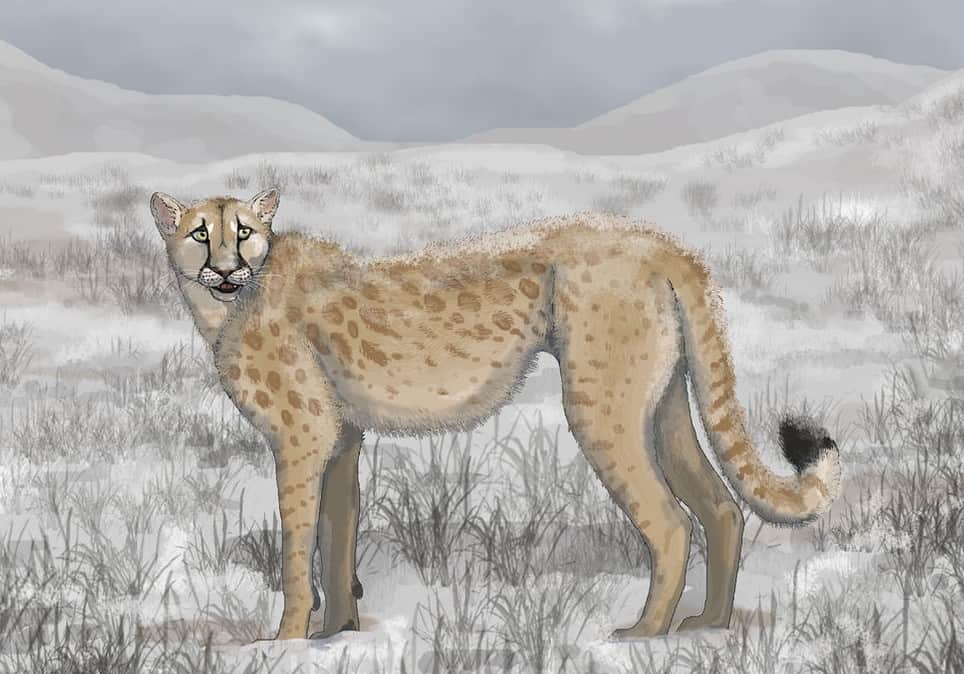
The American
Cheetah
lived in North America before the last Ice Age. Its bones have been discovered from West Virginia to Arizona and even Wyoming.
©Sheatherius / CC BY-SA 4.0 – License
Thousands of years ago, snow leopard-like cheetahs hunted mountain goats across tricky terrain in America, according to fossilized remains. This big cat was known as the American cheetah (Miracinonyx trumani), but it is no longer alive today. American cheetahs are closely related to modern cougars. However, compared to a modern cheetah, the American cheetah stood about 2.75 feet (0.85 meters) high and weighed about 156 pounds (70 kilograms).
9. Giant Beaver

The giant beaver was the largest rodent to have ever lived in North America.
©Steven G. Johnson / CC BY-SA 3.0 – License
Giant beavers (Castoroides ohioensis) were once found in North America. The animal was part of the megafauna, or giant animals living in North America during and after the last ice age. This rodent was the largest ever found in North America. In size, it was comparable to a black bear. An aquatic plant-eating animal, the giant beaver lived in lakes and ponds. Giant beavers are ancient ancestors of modern beavers.
10. Ground Sloth
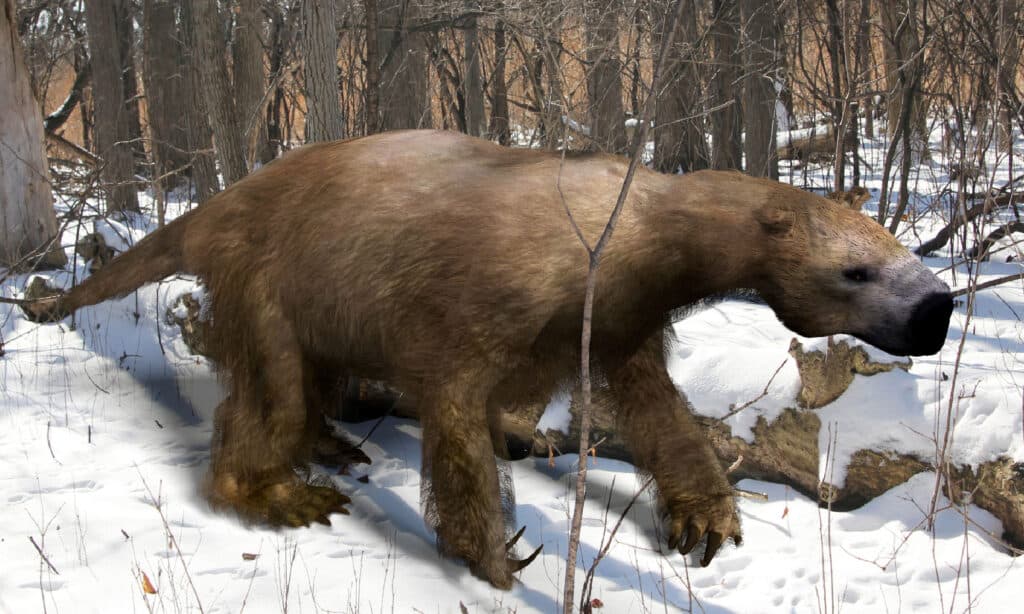
The giant ground
sloths
lived during the Ice Age in the Americas.
©iStock.com/Aunt_Spray
The giant ground sloth evolved in South America around 35 million years ago. It is estimated that they migrated into North America around 8 million years ago. In addition to living during the Pleistocene, also known as the Great Ice Age, giant ground sloths also preferred living in forests along rivers and lakes. A ground sloth primarily ate vegetation, so it was an herbivore.
It is also important to note that these sloths were pretty gigantic as well. It is estimated that Megalonyx sloths reached a height of around 9.8 feet (3 meters) and weighed up to 2,205 pounds at maturity (1,000 kilograms).
The photo featured at the top of this post is © Dotted Yeti/Shutterstock.com
Thank you for reading! Have some feedback for us? Contact the AZ Animals editorial team.






